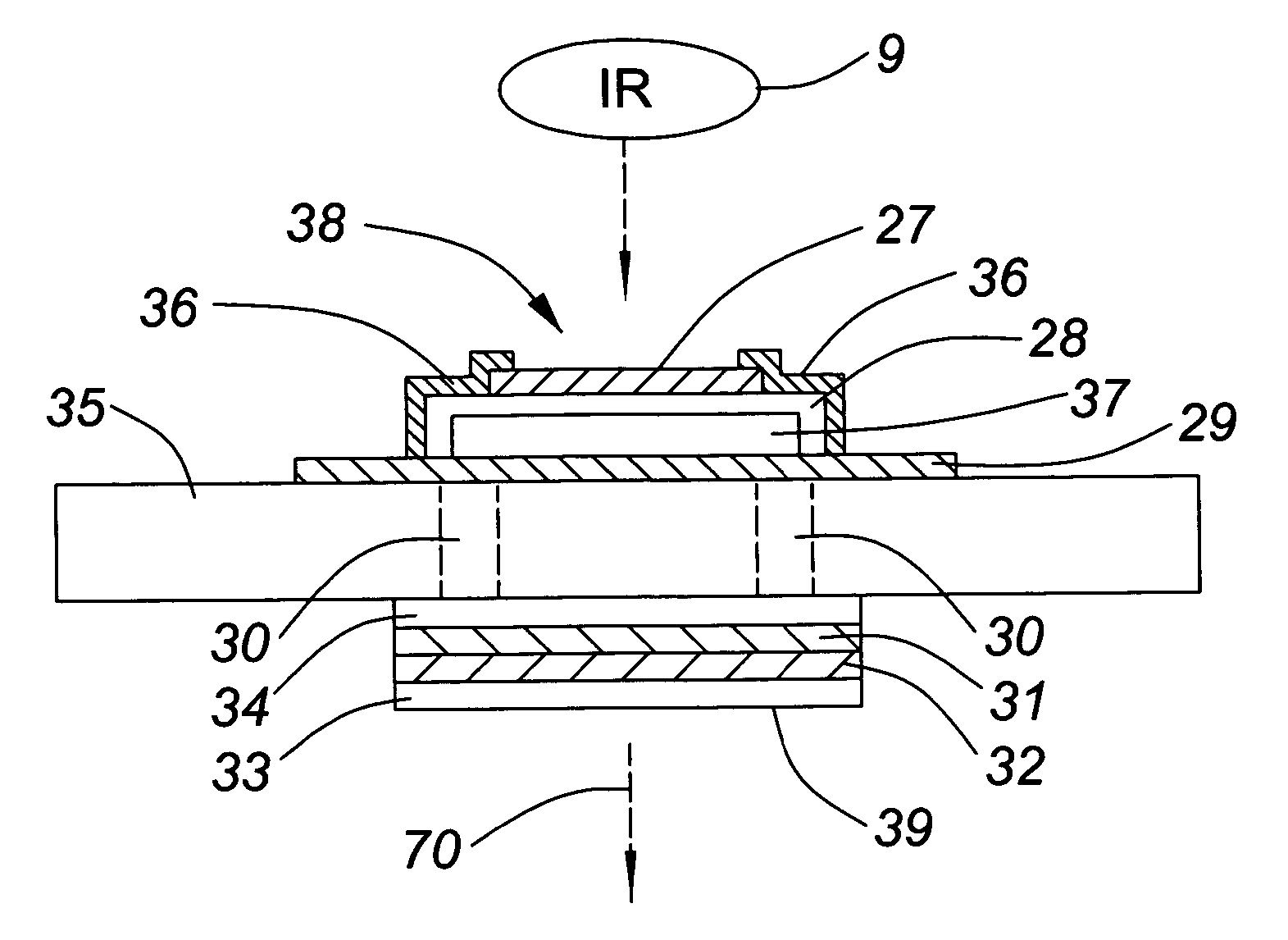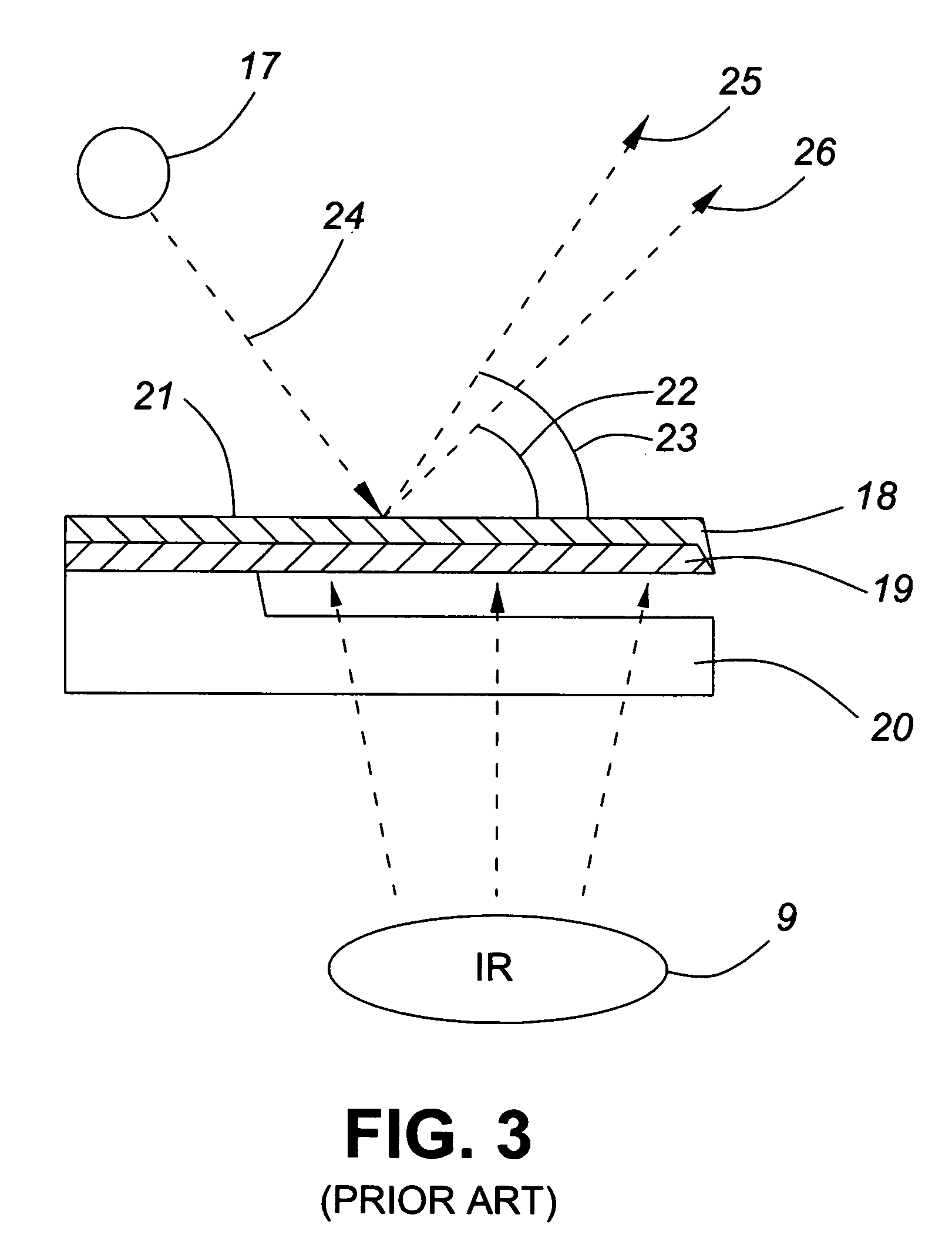Infrared imager
a technology of infrared imager and imager body, which is applied in the field of infrared imager, can solve the problems of increased and the inability to widely use imagers, and achieves the effects of increasing the size, weight and power consumption of the imager, and increasing the cost of additional electronics and display apparatuses
- Summary
- Abstract
- Description
- Claims
- Application Information
AI Technical Summary
Benefits of technology
Problems solved by technology
Method used
Image
Examples
Embodiment Construction
[0022] There are a few proposed solutions to minimize the electronics and visually display an image for infrared imagers. For example, a direct view infrared structure was disclosed in U.S. Pat. No. 6,140,646, by Heinz Busta et al wherein an electrode 11 on a cantilever 2, which is made of two layers 3 and 4 of material or bi-material, with different thermal expansion coefficients, is used to modulate electron emissions from an array of field emitters 5 as illustrated in FIG. 1b. The emitted electrons (arrow 6) then bombard a phosphor plate 1, giving a visible image. FIG. 1b shows a cross sectional view of that configuration whereas FIG. 1a is a top view. When IR radiation is incident on the bi-material cantilever 2, which usually consists of a layer of conductive film 3 and a layer of insulator 4 having different thermal expansion coefficients, the cantilever 2 bends as its temperature rises in response to absorbed infrared radiation. This bending changes the distance 10 between th...
PUM
 Login to View More
Login to View More Abstract
Description
Claims
Application Information
 Login to View More
Login to View More - R&D
- Intellectual Property
- Life Sciences
- Materials
- Tech Scout
- Unparalleled Data Quality
- Higher Quality Content
- 60% Fewer Hallucinations
Browse by: Latest US Patents, China's latest patents, Technical Efficacy Thesaurus, Application Domain, Technology Topic, Popular Technical Reports.
© 2025 PatSnap. All rights reserved.Legal|Privacy policy|Modern Slavery Act Transparency Statement|Sitemap|About US| Contact US: help@patsnap.com



